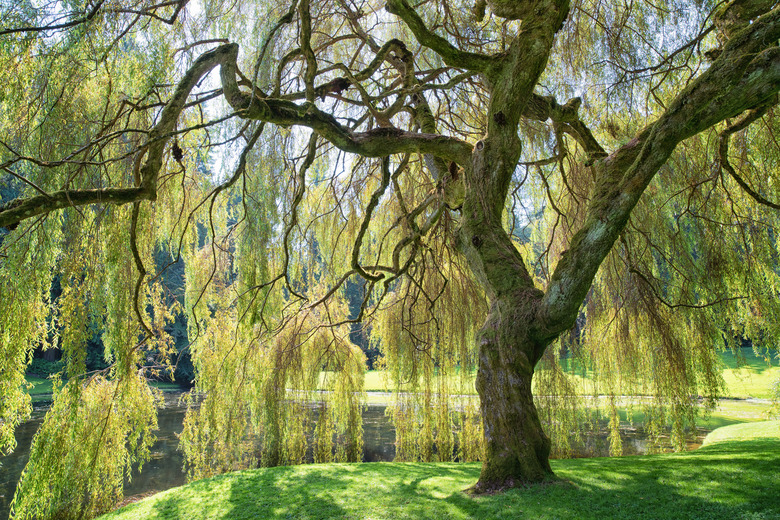Why Is My Weeping Willow Turning Yellow?
Despite the romance associated with weeping willows, they are very challenging trees. Too large by far for most urban or suburban settings, they are messy, weak-wooded trees with very aggressive root systems that invade irrigation, sewer, and septic lines and buckle sidewalks, driveways, and patios. Worse yet, they are susceptible to countless insect pests and diseases. If the situation gets serious and your weeping willow is important to you, a certified arborist is required.
About the Weeping Willow Tree
About the Weeping Willow Tree
The genus Salix, which includes all willows, refers to the trees' medicinal value. Native Americans used the bark to relieve headaches. The active ingredient of willow bark is salicylic acid, which is used to produce aspirin. Weeping willows do best in full sun or very light shade but they do tolerate alkaline soil. Good initial pruning develops a strong, central trunk and strong branch angles and will increase longevity but a 30-year-old weeper is ancient.
The Vibrant Colors of Weeping Willows
The Vibrant Colors of Weeping Willows
Some weeping willow varieties are "golden" by intention, including the cultivar "aurea," with its golden yellow branches, and the moderately weeping variety "golden curls," with golden bark along with curling branches and leaves. But the weeping willow is a deciduous tree, which means in autumn the long, thin, leaves of all types will turn yellow and create a flash of fall color before falling.
Avoid Overwatering Weeping Willow Trees
Avoid Overwatering Weeping Willow Trees
A weeping willow's leaves may yellow and drop as a result of stress brought on by drought or the lack of regular watering. Also, even though willows have at least moderate tolerance for standing water, especially for young trees, too much water on willow roots or trunks can lead to leaf yellowing or chlorosis followed by defoliation. Chlorosis may also be a nutritional problem—a lack of trace elements, especially iron—due to poor drainage or compacted soil from foot traffic or construction.
Be Aware of Weeping Willow Diseases
Be Aware of Weeping Willow Diseases
A fairly common plant disease for willows is rust, which starts as yellow spots on the lower surfaces of leaves and, if severe, leads to further yellowing then defoliation and sometimes twig and branch death. Rake, pick up and destroy dropped leaves from diseased trees. The standard treatment otherwise is a longstanding fungicide and bactericide made from copper sulphate and hydrated lime and called generically "Bordeaux mixture." Ironically, applying the mixture during hot weather may cause leaves to yellow and drop.
Keep Weeping Willow Pests Away
Keep Weeping Willow Pests Away
Willows can survive many diseases, but pests such as the poplar borer may be another matter. Leaves turn yellow and drop as an early symptom, though visible holes on both trunk and branches along with sawdust are the telltale signs. Horticulturist Ron Smith of North Dakota State University Extension notes that early recognition of the pest's presence and treatment that his office recommends may offer hope, but if a tree is young and fully infested, or older with dead limbs and evidence of sow bugs or other detritus-eating insects, it may be beyond saving. Contact an arborist certified by the International Society of Arboriculture to see if the tree can be saved.
